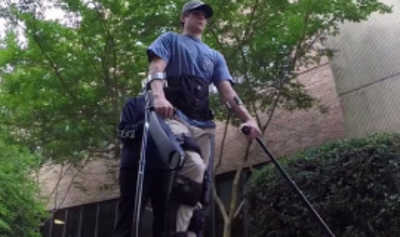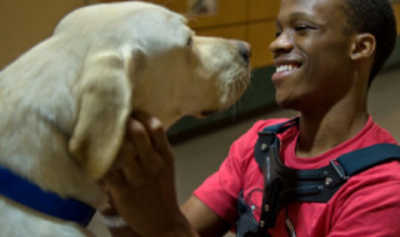How do I do a sliding board transfer?
A sliding board is a piece of equipment that can be used if a person is not able to use their legs to complete a transfer between surfaces or if a standing transfer is not safe to perform. The board is used to make a solid “bridge” between the two surfaces that a person can slide across to transfer between them.
EQUIPMENT
There are several types of sliding boards commercially available and they come in a variety of lengths. Weight limits can apply.
Setup
Appropriately setting up the environment is essential to safely complete a sliding board transfer. Attempts should be made to have surfaces be level or to be moving slightly downhill to decrease the effort needed to move between surfaces. Unless transferring to the shower/tub or toilet, lower body clothing should be in place to decrease friction. Use caution with nylon clothing materials as these can cause excessive, even unintentional sliding.
PERFORMING A SLIDING BOARD TRANSFER OUT OF A WHEELCHAIR
- Position the wheelchair at a 30-45 degree angle next to the bed (or other surface). If that angle is not possible due to the environment layout, get the wheelchair as close as possible so that sliding board can cover the gap between the surfaces.
- Lock the wheelchair brakes and move armrest out of the way on the side you will be transferring to.
- Move the person’s bottom to the front of the seat so that the feet are in firm contact with the floor.
- Have the person shift their weight onto the opposite hip, and gently place the sliding board under the person’s upper thigh/bottom. You may have to wiggle it a bit until you get about 1/3 the length of the board underneath the bottom. If doing a bare bottom transfer, applying lotion to the board or covering the board with a pillowcase can help to decrease friction.
- With trunk leaning forward, the person’s arms can be used to push while sliding the bottom across the board to the next surface. Every effort should be made to lift the body so as not to drag skin across the board surface, in order to avoid painful friction with the skin. Be sure to fully clear the wheel or other parts of the wheelchair.
- Any assistance required should be provided from in front of the person performing the transfer. Caregivers should use proper body mechanics, including bending at the knees and keeping the low back in neutral alignment. It can be helpful to kneel down on one knee in front of the person performing the transfer so as to allow them enough space to lean forward when pushing across the board.


